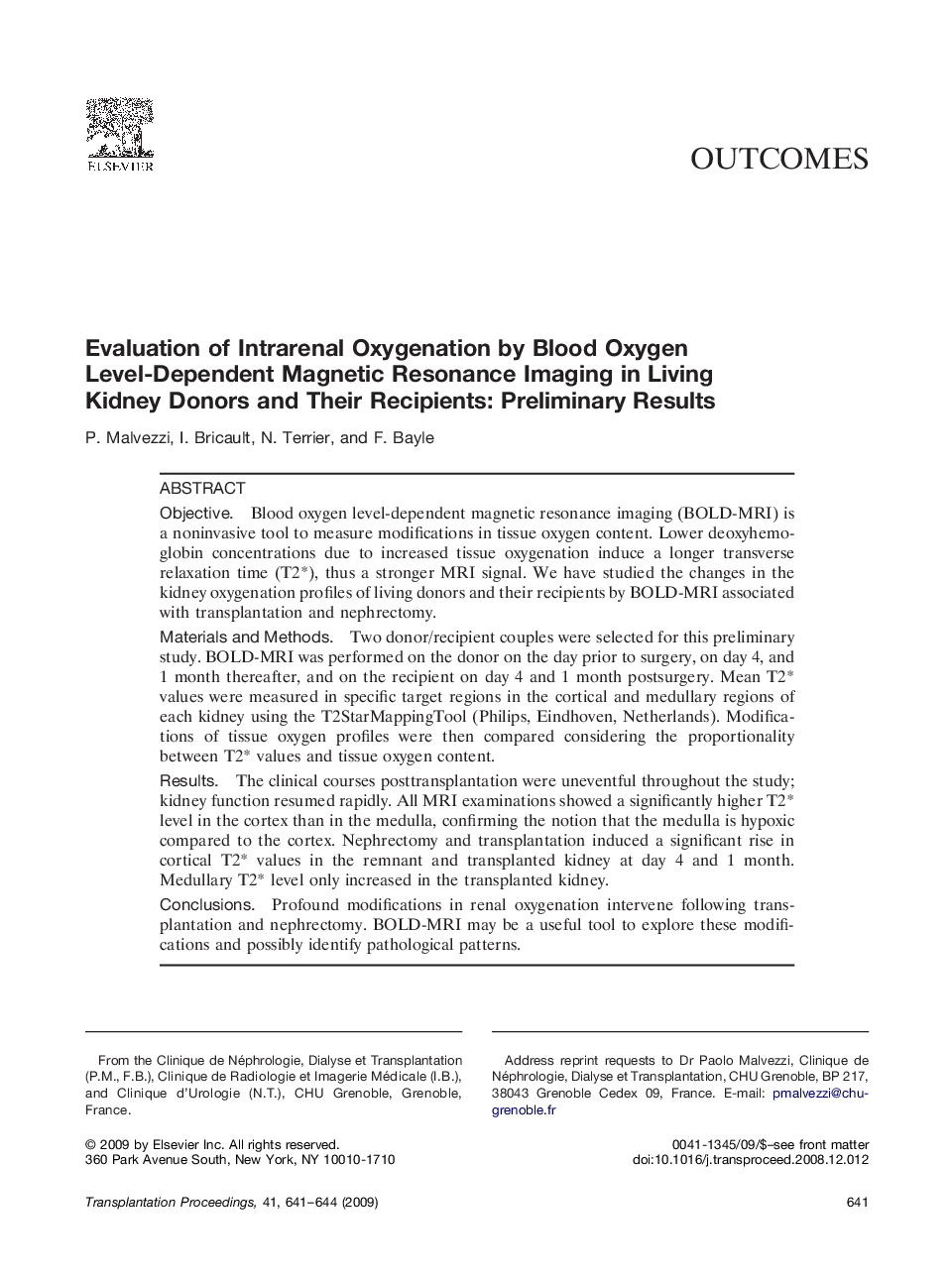| Article ID | Journal | Published Year | Pages | File Type |
|---|---|---|---|---|
| 4259536 | Transplantation Proceedings | 2009 | 4 Pages |
ObjectiveBlood oxygen level-dependent magnetic resonance imaging (BOLD-MRI) is a noninvasive tool to measure modifications in tissue oxygen content. Lower deoxyhemoglobin concentrations due to increased tissue oxygenation induce a longer transverse relaxation time (T2*), thus a stronger MRI signal. We have studied the changes in the kidney oxygenation profiles of living donors and their recipients by BOLD-MRI associated with transplantation and nephrectomy.Materials and MethodsTwo donor/recipient couples were selected for this preliminary study. BOLD-MRI was performed on the donor on the day prior to surgery, on day 4, and 1 month thereafter, and on the recipient on day 4 and 1 month postsurgery. Mean T2* values were measured in specific target regions in the cortical and medullary regions of each kidney using the T2StarMappingTool (Philips, Eindhoven, Netherlands). Modifications of tissue oxygen profiles were then compared considering the proportionality between T2* values and tissue oxygen content.ResultsThe clinical courses posttransplantation were uneventful throughout the study; kidney function resumed rapidly. All MRI examinations showed a significantly higher T2* level in the cortex than in the medulla, confirming the notion that the medulla is hypoxic compared to the cortex. Nephrectomy and transplantation induced a significant rise in cortical T2* values in the remnant and transplanted kidney at day 4 and 1 month. Medullary T2* level only increased in the transplanted kidney.ConclusionsProfound modifications in renal oxygenation intervene following transplantation and nephrectomy. BOLD-MRI may be a useful tool to explore these modifications and possibly identify pathological patterns.
